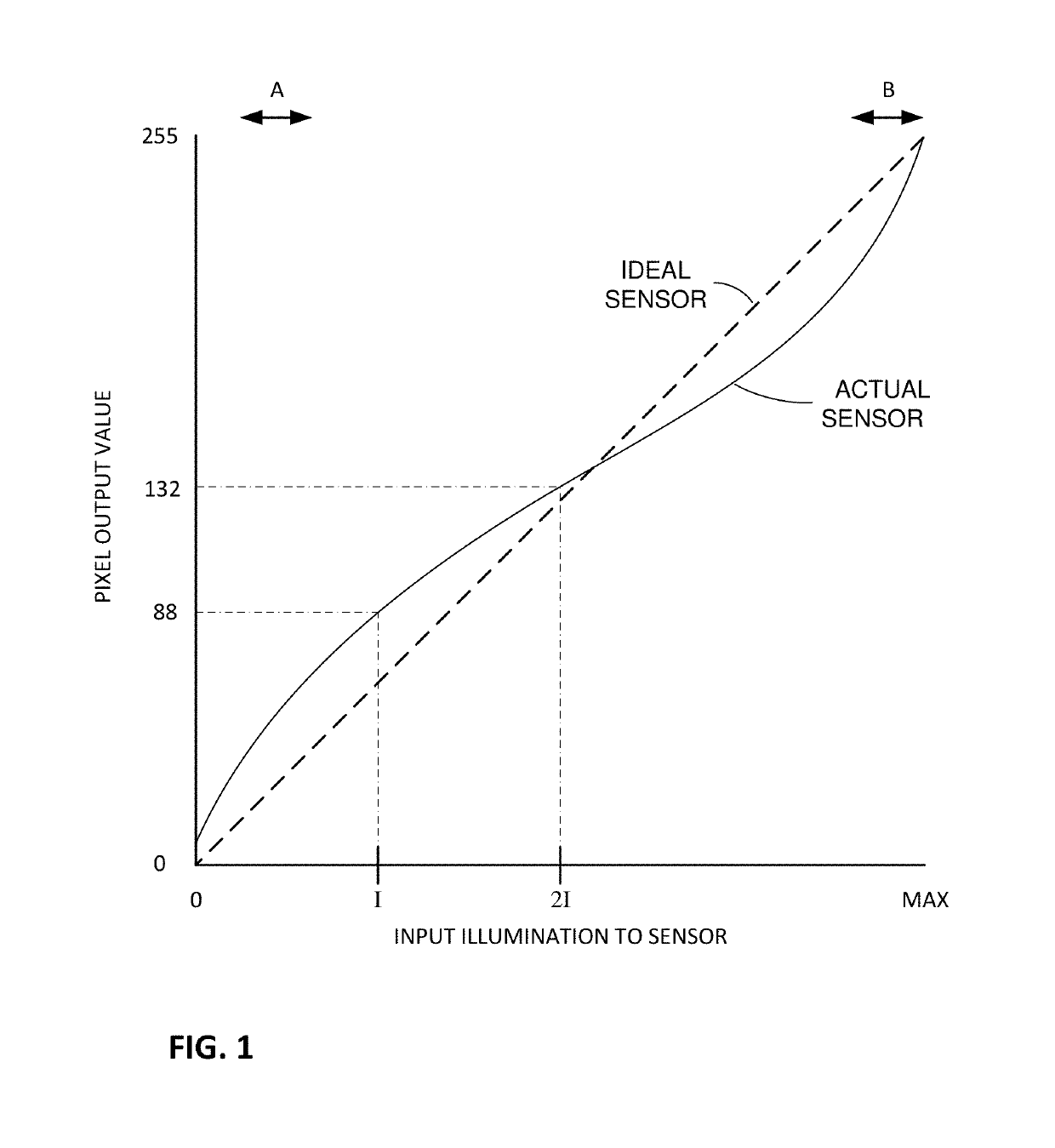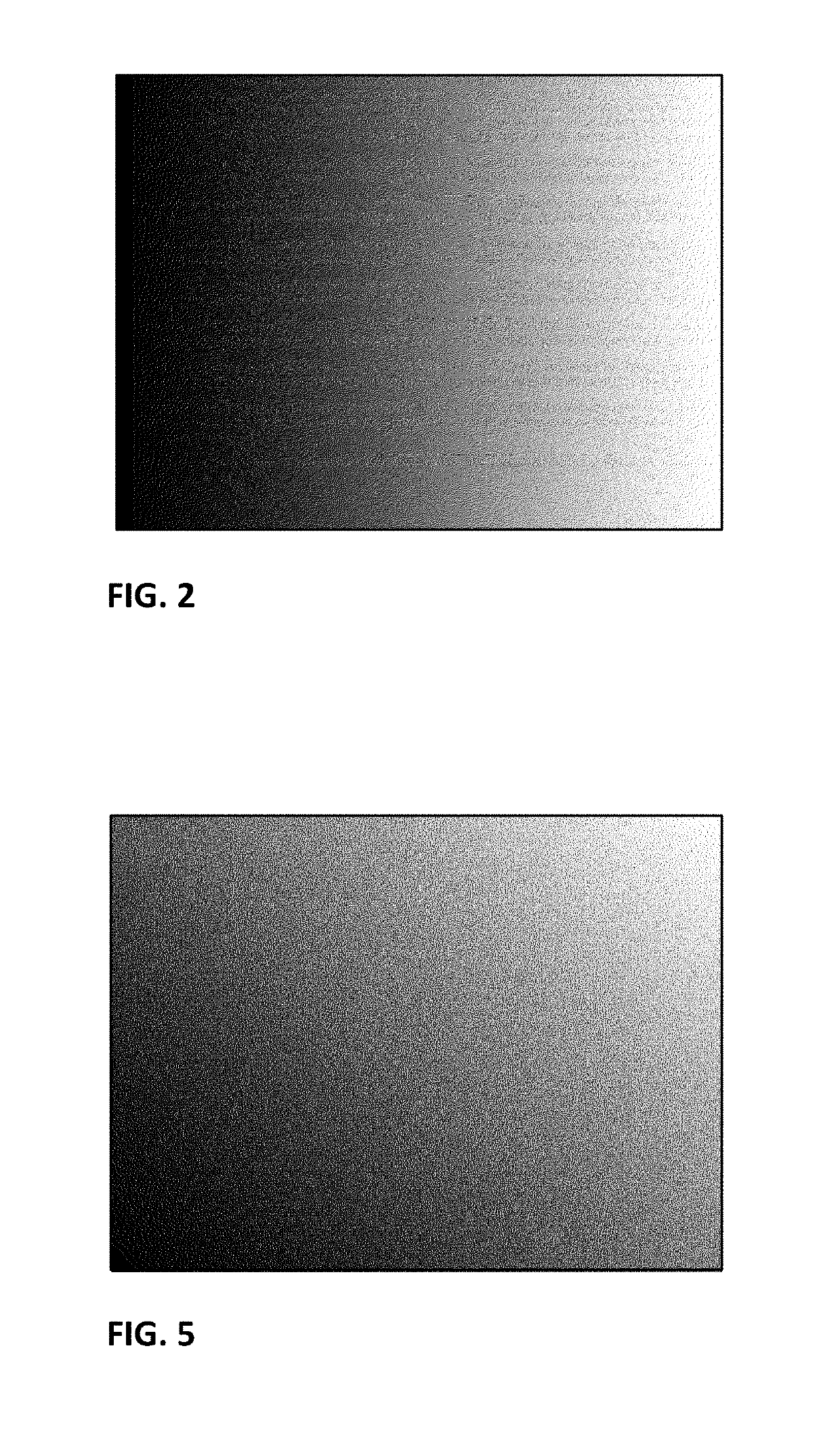Methods and arrangements for configuring industrial inspection systems
- Summary
- Abstract
- Description
- Claims
- Application Information
AI Technical Summary
Benefits of technology
Problems solved by technology
Method used
Image
Examples
Embodiment Construction
[0028]Due to the subtle nature of digital watermark signals, it is important that images submitted for watermark decoding be captured under the best possible conditions. If the image depiction of the watermark is even slightly underexposed or overexposed, or if the camera gain is set too high or too low, watermark decoding suffers.
[0029]A further complication is camera non-linearity. The sensors in many industrial inspection camera systems are relatively inexpensive, and their accuracy suffers. Ideally, when a camera sensor is shielded from all illumination, each of its pixels should produce an output signal of zero. Similarly, when a camera sensor is exposed to the maximum level of luminance for which it is designed, each of its pixels should produce the highest possible output state (e.g., 255, in an 8-bit sensor).
[0030]Moreover, when the luminance presented to a camera sensor increases by a given percentage (e.g., 100%), the output signal from each of its pixels should increase b...
PUM
 Login to View More
Login to View More Abstract
Description
Claims
Application Information
 Login to View More
Login to View More - R&D
- Intellectual Property
- Life Sciences
- Materials
- Tech Scout
- Unparalleled Data Quality
- Higher Quality Content
- 60% Fewer Hallucinations
Browse by: Latest US Patents, China's latest patents, Technical Efficacy Thesaurus, Application Domain, Technology Topic, Popular Technical Reports.
© 2025 PatSnap. All rights reserved.Legal|Privacy policy|Modern Slavery Act Transparency Statement|Sitemap|About US| Contact US: help@patsnap.com



